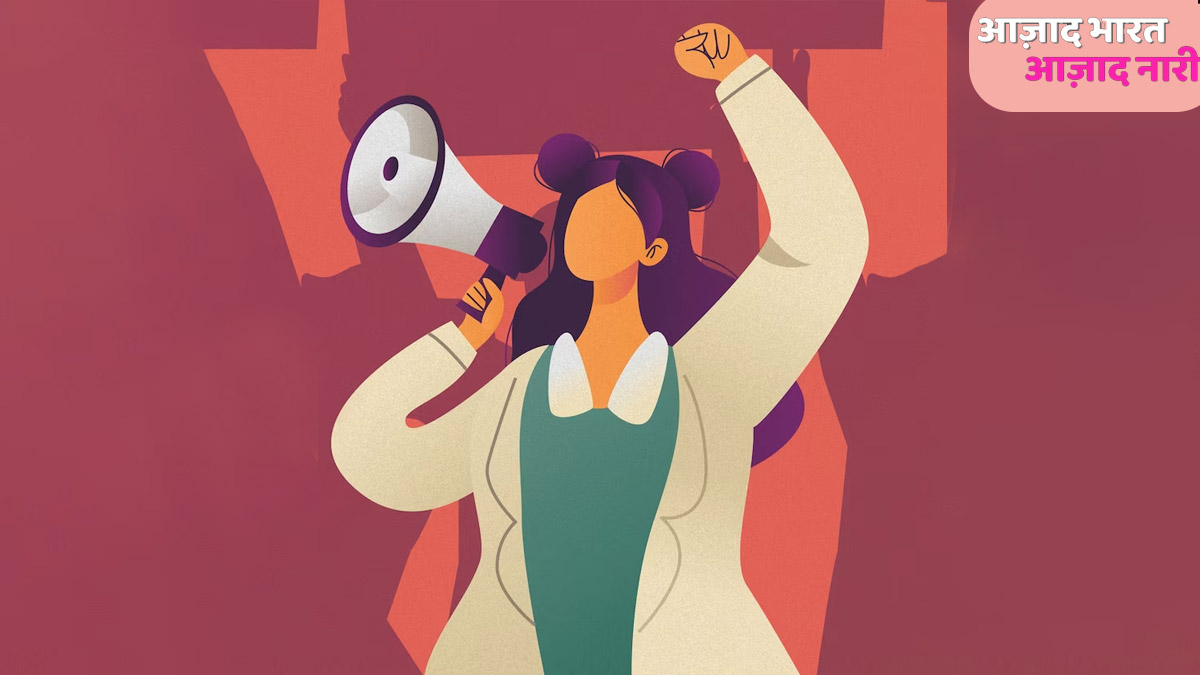As we approach the 76th anniversary of our independence this year, one would anticipate significant advancements in the roles and achievements of women across various domains. However, despite the strides India has taken in numerous sectors, there remains a notable absence of adequate representation of women in the realms of politics and bureaucracy. As we commemorate this Independence Day, our campaign, ‘Azaad Bharat, Azaad Naari’ aims to spotlight critical women's issues encompassing discrimination, injustice, and inequality. Through this initiative, we aim to draw attention to the available data concerning women's participation in politics and bureaucracy.
Election Commission Of India’s Report On Women's Representation In Politics
Indian elections have displayed a notable divergence in recent times. A noticeable rise in female voter participation has been observed throughout the nation. According to the data, from the Election Commission of India, among the eight states that participated in the 2022 elections, seven witnessed an upsurge in female voter engagement. While this trend holds promise, the encouraging surge in the proportion of women voters evident in municipal, state, and national elections hasn't resulted in a corresponding increase in the number of women stepping forward as election candidates.
The inadequate representation of women within the Indian legislative bodies remains a persistent concern. According to the data collected by the Inter-Parliamentary Union (IPU), women constitute only 14.44% of the total members of the 17th Lok Sabha. The latest available report from the Election Commission of India (ECI) echoes the same pattern, indicating that women's representation stands at a mere 10.5% among all Members of Parliament as of October 2021. A similar scenario unfolds in state assemblies, where the average proportion of female Members of the Legislative Assembly (MLAs) stands at a modest 9%.
Don't Miss: Aazaad Bharat Aazaad Naari: Menstrual Hygiene and Its Ground Reality In India
India's position in this aspect has declined, placing it below Pakistan, Bangladesh, and Nepal. As of May 2022, statistics revealed that Pakistan had a 20% representation of women, Bangladesh had 21%, and Nepal led with 34%. As per ECI, since the time of Independence, the level of women's representation in the Lok Sabha has not even managed to achieve a 10% increase.

Central Government’s Employment Census Data Of Women's Representation in Bureaucracy
Gender representation within the Indian bureaucracy remains low as well. The involvement of women in various public service positions at both the national and state levels is so inadequate that some of these roles even offer fee waivers for female candidates.
Nevertheless, according to data from the Indian Administrative Services (IAS) and the central government's employment census of 2011, the proportion of women employees constituted less than 11% of the total. By 2020, this number had only risen to 13%. Remarkably, out of a cumulative count of 11,569 IAS officers who have taken up positions between 1951 and 2020, merely 1,527 were women. Additionally, as of 2022, a mere 14% of IAS Secretaries were women, accounting for only 13 out of 92 positions. The situation is equally dire in terms of senior positions, with a meagre three women serving as chief secretaries across all Indian states and union territories.

Staggering Contrast Between Male And Female Participation In UPSC Exam
As per the latest official statistics released by the Union Public Service Commission (UPSC), during the year 2019, about 3.67 lakh female candidates submitted applications for the UPSC examination, out of which 1.77 lakh proceeded to take the examination. Among the examinees, a mere 1,534 women managed to pass the qualifying criteria. In comparison, over the same period, a total of 7.68 lakh male candidates submitted applications for the examination, with 3.90 lakh of them eventually participating in the test. Furthermore, women candidates exhibit a greater inclination towards opting for voluntary retirement from their service, as compared to their male counterparts.
All of these data indicate a limited progression in the inclusion of women in political roles, while in the bureaucratic domain, the growth has been a mere 2% between 2011 and 2020. This persistent lack of proportional representation might be attributed to a range of societal and educational challenges.
Don't Miss: Aazaad Bharat, Aazaad Naari: Nushrratt Bharuccha's Take On Her Idea Of True Independence
Social Norms And Stereotypes
Traditional gender expectations and stereotypes frequently shape the experiences of women in India. These prevailing social norms discourage women from venturing into political careers. The prevailing belief is that women's primary roles should revolve around being wives and mothers, with politics typically perceived as a realm reserved for men.
Unequal Opportunities for Women
Gender disparities are evident within the political landscape, where women encounter imbalanced prospects encompassing reduced remuneration, restricted resource accessibility, and limited avenues for networking. This asymmetry poses formidable obstacles for women as they strive to stay on the same level as their male counterparts and achieve success in the political arena.
Lack Of Education
Throughout history, Indian women have faced constrained educational opportunities, impeding their potential involvement in politics. Despite some advancements in recent times, a significant portion of women still grapple with insufficient education and competencies required for engaging in political leadership roles. As per, the Annual Status of Education Report (ASER) 2020, a notable 5.5% of children aged 6 to 10 were not registered in schools, while 15.9% of children aged 11-14 were similarly not enrolled in educational institutions.
It is imperative that these issues are acknowledged and promptly addressed, ensuring that women are granted ample opportunities to thrive in every facet of existence.
